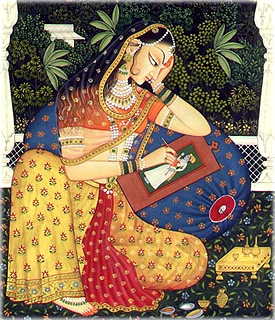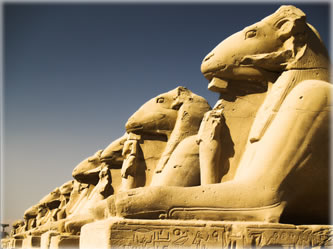Dear Planet Waves Subscriber:
Wednesday’s New Moon in Aries arrives at a time when many transitions are brewing. The Moon and Sun will be conjunct Wednesday at 8:29 am EDT (New York daylight time) and 1:29 pm GMD/BST (London daylight time). This is the first New Moon of the astronomical and astrological year, and it takes place conjunct an outer planet that you won’t see listed in your usual ephemeris, astrology chart or read about anywhere else except an astrophysics journal: that is 1992 QB1.

It’s strange that a minor planet (yes, orbiting our own Sun) that was discovered in 1992 still hasn’t been named — particularly one so historically significant. QB1 was the first object discovered orbiting our Sun beyond Pluto. It has an orbit of 289 years and is properly known as (15760) 1992 QB1. Today we know about Varuna, Chaos, Makemake and many others in this region of space; but QB1 was the very first, discovered in none other than the first degree of Aries: the Aries Point (technically, the sidereal vernal point).
The discovery was the confirmation of the existence of what is known as the Kuiper Belt, the vast region in space where Pluto resides. For this extraordinary discovery, I have proposed the name Radharani, the supreme goddess of Hindu mythology and the consort to Lord Krishna.
Let’s go over a few basics of this New Moon, and then add a few thoughts about 1992 QB1.
First, this New Moon marks a profound moment of transition, of many events about to happen. Saturn and Uranus are lining up for their next-to-last opposition for this cycle. That is a tense aspect between two wildly different kinds of energies. Many are feeling the tension and the pressure as the impetus to make radical changes. For some this is showing up as frustration and for others intense bursts of creative friction. These oppositions spark up the psyche, release energy and help us see what is what in our supposedly dualistic world of opposites. Carl Jung observed that no real progress came without this kind of opposition energy; let’s make the most of it.
Meanwhile, Chiron is about to ingress Pisces for the first time since 1969, which is a powerfully spiritualizing influence. Chiron’s role is to focus that soul energy of Pisces, with a lot of practice during a long conjunction to Neptune. Both Jupiter and Uranus are about to make a sign change into Aries and form a spectacular conjunction. Closer to home, Mercury is getting ready to station retrograde in Taurus (on the 18th) and the Sun is about to enter Taurus (on the 20th). [We covered that last week.]

So we have a time of anticipated movement; of big transitions and small ones; a moment of reshuffling and rearranging; of tectonic forces way beyond our control, which we can use to help shape our lives. In the midst of this, the New Moon is a time of setting intentions and focusing energy.
Any event in Aries reminds us that Mars, the ruler of Aries, is in direct motion: we need to keep remembering that, and recalling that we are still in the process of working out everything that happened during the Mars retrograde in Leo between Dec. 20 and March 10. Mars is slowly coming up to speed, reconnecting us with our creative fire, our sense of self and our sense of direction.
Mercury, as it tracks back through Taurus, will make a series of squares to Mars. This is tricky because we have a hot, impetuous aspect happening between two fixed signs (Taurus and Leo), so this may feel like coming up against some of your own stubbornness, or your own desire to bust out of whatever is holding you back. Mark down these dates: April 5, April 25 and June 11. These are the dates when Mercury and Mars [were/will be] in a square aspect. You will need to guard against getting frustrated with yourself, losing your temper or wanting too much to change too fast. Note how much is already in progress and add a little trust that the universe is going to produce some results, if you do your part and stay awake.
As for the conjunction to QB1, which is the closest aspect this New Moon makes. I have described QB1 as representing the archetype of the thresholder. That is the person who helps others make major transitions; I associate her with midwives, doulas, hospice workers, orgasm coaches, grief counselors and everyone who steps in at that moment of total transition and offers themselves in service. Many nurses function in this capacity without getting acknowledgement. There are highly skilled, trained volunteers who show up at the scenes of fires and crime scenes and help the survivors. These are all the thresholders.

This is an appropriate planet to have conjunct a New Moon on the cusp of so much change. In Aries, we get the clue that this really is about guiding our own processes of reinventing ourselves, and supporting the similar experiences of others; of letting go of an old form and an old pattern of energy and transitioning into something entirely new, liberated from constrictions that seem so daunting today — particularly those of the human ego.
As mentioned, I have proposed the name Radharani. Based on its classification, 1992 QB1 will be named for a deity of creation or resurrection. Despite some incredible name depletion that has occurred because there have been so many discoveries in recent years, but only a limited number of deities to name things after, Radharani is still available. One of the reasons that I think a Vedic creation goddess is appropriate is that QB1 was discovered on the Aries Point — which is the place where the Vedic (or sidereal) zodiac used in India is reckoned against the tropical zodiac used in the West. This point, as I’ve suggested before, is an intersection of the public and the private spheres of existence.
I just called the co-discoverer of 1992 QB1, Dr. Jane X. Luu, at MIT’s Lincoln Laboratory. We’ve spoken before; she knows that QB1 is one of my favorite discoveries, and I’ve shared my naming theory with her. I began by mentioning that there was a New Moon conjunct QB1 on Wednesday (which she didn’t know about, since astronomers don’t usually follow this kind of thing), and it turns out that that day she is giving her first talk on the Kuiper Belt in ages, at a small private college in Massachusetts. (I would go, but I have another commitment that night. But she promised to share the PowerPoint presentation.)
Here is what I learned from her today. She said that most astronomers thought that the region beyond Pluto was completely empty. Gerard Kuiper, the astronomer for whom that region of space was eventually named, was speculating when he said it wasn’t empty. In other words, he didn’t have evidence. Previously, an astronomer named Kenneth Edgeworth had speculated (in 1943) that there was lots of stuff out there too. But neither had data to support their theory. It was more like a hunch. She and her colleagues investigated and found QB1 — a monumental discovery, if you ask me. This seems to have opened the floodgates to many truly meaningful discoveries.
[Note that Dr. Brian Marsden of the Minor Planet Center (MPC) at the International Astronomical Union (IAU) said that an astronomer named Fred Whipple deserves to have the belt named after him, as he proposed its existence first. I couldn’t get Dr. Marsden on the phone today but I have an email in; this will surely be interesting.]Dr. Luu, the co-discoverer of 1992 QB1, said that every now and then she’s contacted about choosing a name but doesn’t have any tangible ideas and isn’t in a big hurry. She’s not calling a press conference to make an announcement any time soon; she’s the more modest kind of astronomer who does not seek fanfare. This is consistent with those signified by this small planet, most of whom you never hear of. QB1 has been there for a while and doesn’t seem to be going anywhere, except eventually into Taurus. Let’s see what this rare New Moon precisely conjunct QB1 brings. Perhaps the synchronicity will speak.
Till Friday
Yours & truly,
![]()



